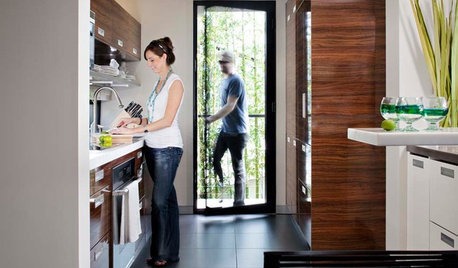Questions about starting VC
jeannienyc
11 years ago
Related Stories

REMODELING GUIDESPlanning a Kitchen Remodel? Start With These 5 Questions
Before you consider aesthetics, make sure your new kitchen will work for your cooking and entertaining style
Full Story
DECORATING GUIDESHow to Decorate When You're Starting Out or Starting Over
No need to feel overwhelmed. Our step-by-step decorating guide can help you put together a home look you'll love
Full Story
MOST POPULAR10 Things to Ask Your Contractor Before You Start Your Project
Ask these questions before signing with a contractor for better communication and fewer surprises along the way
Full Story
GREEN BUILDINGHow to Start Finding a Greener House
On the hunt for a more ecofriendly house? Here are the questions to ask and research to do
Full Story
WORKING WITH PROS10 Questions to Ask Potential Contractors
Ensure the right fit by interviewing general contractors about topics that go beyond the basics
Full Story
MOST POPULAR8 Questions to Ask Yourself Before Meeting With Your Designer
Thinking in advance about how you use your space will get your first design consultation off to its best start
Full Story
ORGANIZINGPre-Storage Checklist: 10 Questions to Ask Yourself Before You Store
Wait, stop. Do you really need to keep that item you’re about to put into storage?
Full Story
REMODELING GUIDESConsidering a Fixer-Upper? 15 Questions to Ask First
Learn about the hidden costs and treasures of older homes to avoid budget surprises and accidentally tossing valuable features
Full Story
REMODELING GUIDES9 Hard Questions to Ask When Shopping for Stone
Learn all about stone sizes, cracks, color issues and more so problems don't chip away at your design happiness later
Full Story
GREEN BUILDINGConsidering Concrete Floors? 3 Green-Minded Questions to Ask
Learn what’s in your concrete and about sustainability to make a healthy choice for your home and the earth
Full StorySponsored
More Discussions






Celbrise
Aindra
Related Professionals
West Milford Landscape Architects & Landscape Designers · Fillmore Landscape Architects & Landscape Designers · Cary Landscape Contractors · Centereach Landscape Contractors · East Chicago Landscape Contractors · Lynn Landscape Contractors · Nutley Landscape Contractors · Pomona Landscape Contractors · Shoreview Landscape Contractors · Woodbury Landscape Contractors · Selma Landscape Contractors · Okolona Stone, Pavers & Concrete · Rolla General Contractors · Toledo General Contractors · Valley Stream General ContractorsjeannienycOriginal Author
sbryce_gw
Celbrise
jeannienycOriginal Author
colin3
jeannienycOriginal Author
wrcaz
jeannienycOriginal Author